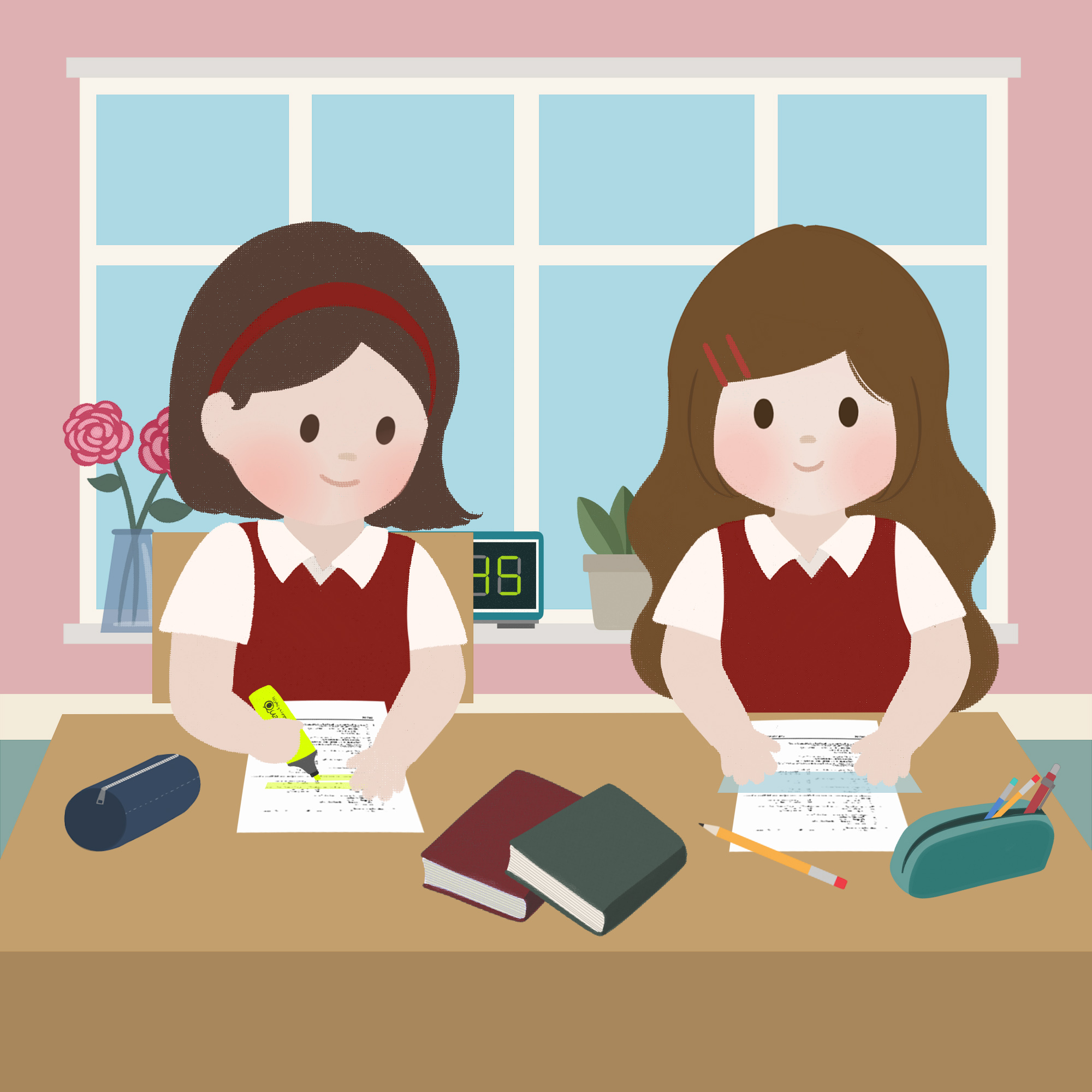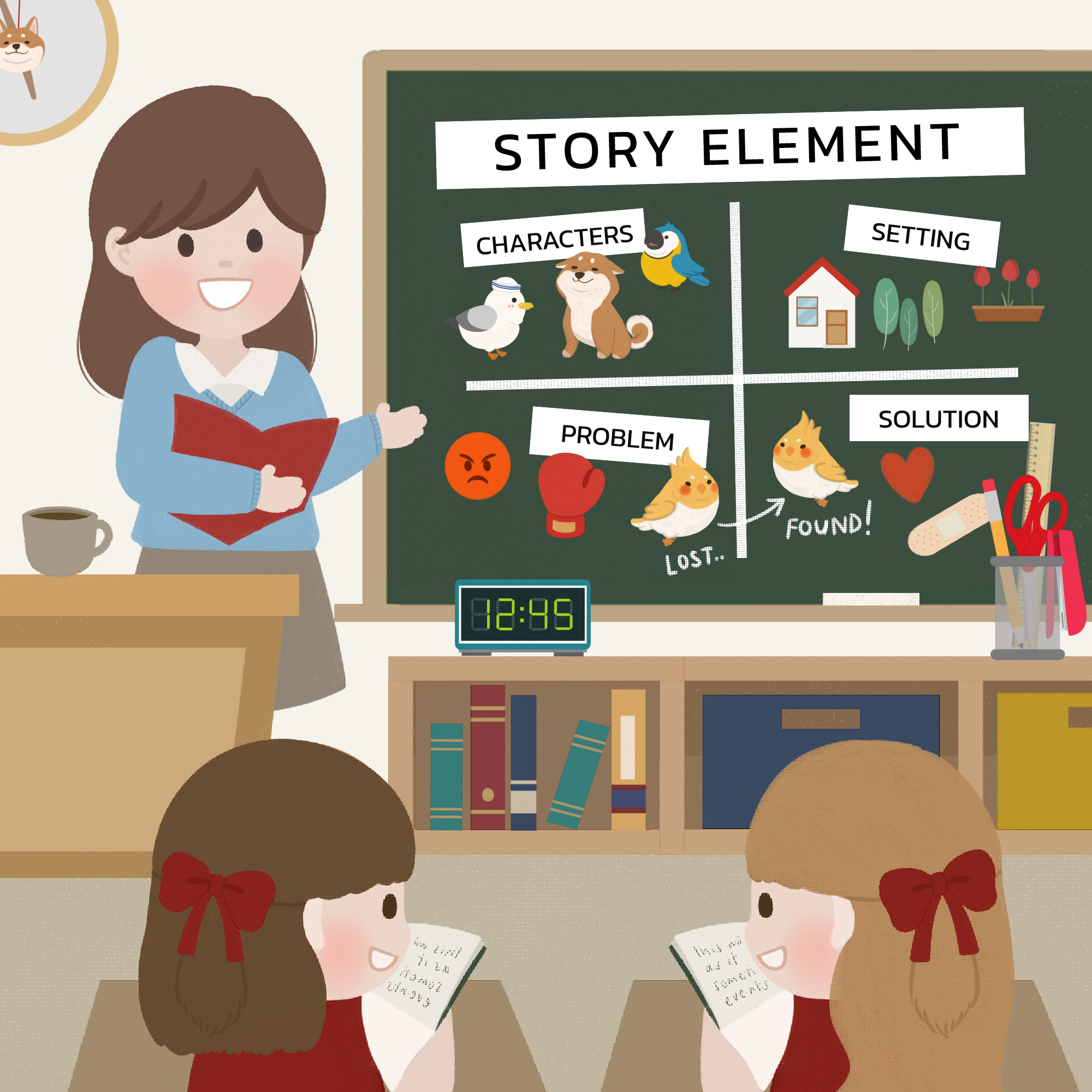We must keep in-mind the unique challenges that new technologies create for all of our learners: especially those who are learning a new language, or who are attempting to access a mainstream curriculum via a second or additional language. Today, I’ve invited Tatyana Cheprasova (Senior Lecturer and EFL/TEFL instructor at Voronezh State University, Russia) to give her expert analysis of the situation, along with many excellent suggestions that we can all take on-board going forward.
This blog post has been beautifully illustrated by Pop Sutthiya Lertyongphati
With digital technologies rapidly taking over various spheres of our lives, a new pedagogical environment for acquisition, processing and transferability of knowledge and skills has been created. These digital shifts will inevitably affect the educational sector as one of the aims of any educational paradigm is to prepare learners to face the challenges of the real world which now cannot be conceived without digital imprints and influence. This article aims to explore the cognitive challenges this new educational reality places before language learners in the Digital Age. It also attempts to provide EFL teachers with insights into how their teaching procedures can be altered in order to meet the cognitive needs of ‘digital native’ learners.
In order to develop the right understanding of the factors affecting cognitive processes (such as perception, learning communications, associations, and reasoning) and the behavioural consequences for digitally native learners, it is deemed essential to explore the new educational environment within which they operate and develop.

The new pedagogical reality which integrates digital language learning (DLL), as with any educational paradigm or teaching tool, can have its own advantages and deficiencies which become visible and apparent when the context which coined a new pedagogical phenomenon is carefully scrutinised. The pedagogical settings we now operate within and which incorporate DLL need to be viewed as the natural evolutionary result of the educational development we have witnessed in the last few decades. According to Warschauer (2004:10), at the early stage, within the language learning domain of the final decades of the 20th century, computer-assisted language learning (CALL) or Structural CALL was strongly influenced by the behaviourist paradigm which shaped this type of DLL as merely stimulus-response, drill-based programmes which enhanced the learning of new vocabulary items or grammar under rigid teacher supervision. The ensuing transfer from a behaviourist to a communicative approach to language learning where meaningful interactions were given the priority also affected the whole nature of CALL design, giving rise to Communicative CALL which implied the use of computers to engage language learners in communicative activities (Warschauer, 2004:11). Finally, with the onset of integrative ICT, the technologies within the new educational paradigm have moved into the era of Integrative CALL which relies on agency and interactive communications (both of teachers and students) as an effective pedagogical tool to solve real-life tasks and problems in a community of peers on the internet (Warschauer, 2004:11).
The widespread implemetation of Integrative CALL which has soared in the field of ELT in the last two decades has been seen by many researchers as a mainly positive trend which has a lot to offer ELT practitioners in various educational contexts (Li and Lan, 2021). Thus, as argued by Grosjean (2019) and Al-Ahdal, (2020), the incorporation of AI and Big Data used in various language applications can facilitate ELT in that it provides learners with real-life language use settings as well as helping to trace down their language progress via the analysis of learners’ errors in L2 writing procedures. Additionally, the use of AI can lead to a more individualised, rather than one-size-fits-all, approach to language teaching where the pedagogical strategies and procedures are designed to meet learners’ requirements and profiles at its best (Li and Lan, 2021). Finally, mobile-assisted language learning (MALL) and game-based language-learning (GBLL) have been regarded by many scholars as possessing high teaching potential in terms of EFL outcomes as they provide students with language learning opportunities at their fingertips, anytime and anywhere, stretching beyond learning a language as limited to only traditional classroom settings (Shadiev, Zhang, Wu & Huang, 2020; Li and Lan, 2021).

Notwithstanding all of the above-mentioned advantageous implications DLL can offer as the new pedagogical dimension, both ELT practitioners and researchers have started to question its overall positive effects on learners’ cognition, psychological and speech development, and their flux of consciousness, thus approaching the issue from both cognitive and social perspectives (Warschauer, 2004; Komlósi, 2016, Voulchanova et al., 2017; Chernigovskaya et al., 2020). The impacts these DLL-driven pedagogical settings can have on language learners are going to be discussed below.
At this point it is worth mentioning that the whole nature of the concept of ‘knowledge’ seems to have radically changed as the Cognitivism learning model has given way to the Constructivism Paradigm. Apparently, when learning occurs within a particular teaching model, the nature of knowledge evolves on the basis of how new data is generated and pedagogical assumptions about which strategies comprise the educational process, as the following comparison illustrates (see the table below):


As it is illustrated above, knowledge is no longer approached as a monolithic unit transmitted from a teacher to their students but rather as a dynamic heterogeneous construct characterised by boundless hypertextual structure where the reader (or a knowledge receiver) acts out as the author (or knowledge co-constructor) (Warschauer, 2004; Chernigovskaya, 2020).

This innovative type of knowledge might inevitably affect learners’ main cognitive processes. Indeed, as argued by the famous Russian neurolinguist Tatyana Chernigovskaya, the hypertextual nature of knowledge leads to the formation of an innovative learning environment, which she refers to as “shared consciousness”, where learners have to rely not on their memory capacity to recall various information quanta but rather on their ability to remember the source of the particular data storage, which, in turn, can seriously weaken working memory, especially that of young learners. Additionally, the hypertextual characteristics of the new type of knowledge are believed to affect the development of learners’ reading skills as this process now implies the inclusion of critical literacy at the very early stages of their cognitive development. This represents a challenging task for young learners whose abilities to compare, contrast and analyse, as well as to make inferences, are not so well-formed as those of adult learners (Warschauer, 2004; Chernigovskaya et al., 2020). These factors might lead to the formation of new and superficially scrutinised skills of digital knowledge management which will need to be specially addressed when teaching L2 reading comprehension.
More importantly, according to Zou and Xie’s (2018) research on the integration of MALL in language learning, this new format of learning, although enhancing personal learning processes, can seriously impede learners’ attention: shortening their attention spans for learning, and therefore, affecting learners’ ability to concentrate and control their attention. In the same vein, as argued by Hsu et al. (2019), adolescent excessive use of mobile devices might have adverse effects on their abilities to integrate scientific knowledge and to make inferences, thus leaving them with a rather distorted, disintegrated and mosaic-like scientific worldview.

Furthermore, as stated by Komlosi (2016:167), the onset of DLL will urge researchers to reconsider and revisit the essence of communication as the new digital teaching paradigm has introduced radical changes in social cognition and communication in the new form of digital culture, which implies that its members operate in connected networks constituted by several types of ‘cognitive identities’. This newly coined term refers both to human and non-human social actors that function smartly and are expected to operate within a highly interlocked framework of multifaceted information flow and exchange. The agents of info-communications in the digital world are related to each other not by commonly shared cultural narratives, as negotiated within the traditional cognitive cultural anthropology, but by fragmented narratives revealed through spontaneous and rather unstable shared interests in networking, information construction and exchange, thus facilitating non-linear, multidimensional communicative interaction which can seriously impede the traditional vertical, authoritative and declarative patterns of cultural knowledge transmission (Komlosi, 2016:167). This change in the social cognition and behaviour paradigm might have adverse effects on learners’ cognitive skills as the long evolutionary process of linear information processing typical for any culturally coherent human community is now challenged by parallel and connected network-based information processing: making use of fragmented, encapsulated information chunks provided by a plethora of information sources, which, in turn, forces learners and educators to seek new strategies of information management and info-communications in novel contexts (Komlosi, 2016:168).
Conclusion
At this point, an important conclusion which can be drawn is that the wide incorporation of DLL we are witnessing now needs to be approached as an irreversible process offering a new perspective on information processing and knowledge management of language learners in various contexts. Notwithstanding its obvious advantageous effects, DLL has already signposted certain cognitive, behavioural and communicative challenges for learners. More research providing evidence of direct comparison between learning from others and learning from digital tools is required to develop a better understanding of the standard modes and channels of language transmission in in the digital age and to conceive the cognitive and behavioral consequences of learning in digital ecosystems.

References
- Al-Ahdal, A. (2020). Using computer software as a tool of error analysis: Giving EFL teachers and learners a much-needed impetus. International Journal of Innovation, Creativity and Change , 12(2), 418–437.
- Chernigovskaya, Tatiana & Allakhverdov, Viktor & Korotkov, Alexander & Gershkovich, Valeria & Kireev, Maxim & Prokopenya, Veronika. (2020). Human brain and ambiguity of cognitive information: A convergent approach. Vestnik of Saint Petersburg University. Philosophy and Conflict Studies. 36. 675-686. 10.21638/spbu17.2020.406.
- Grosjean, F. (2019). A journey in languages and cultures: The life of a bicultural bilingual. Oxford, UK: Oxford University Press.
- Hsu, C.T., Clariana, R., Schloss, B., & Li, P. (2019). Neurocognitive signatures of naturalistic reading of scientific texts: a fixation-related fMRI study. Scientific Reports,9(1), 1–16.
- Komlósi, L. (2016). 13. Digital Literacy and the Challenges in Digital Technologies for Learning. In D. Dejica, G. Hansen, P. Sandrini & I. Para (Ed.), Language in the Digital Era. Challenges and Perspectives (pp. 162-171). Warsaw, Poland: De Gruyter Open Poland. https://doi.org/10.1515/9783110472059-015
- Li, P., & Lan, Y. (2021). Digital Language Learning (DLL): Insights from Behavior, Cognition, and the Brain. Bilingualism: Language and Cognition, 1-18. doi:10.1017/S1366728921000353
- Shadiev, R., & Yang, M. (2020). Review of studies on technology-enhanced language learning and teaching. Sustainability, 12(2), 524.
- Sidorova, I. (2019). Learning Via Visualization at the Present Stage of Teaching a Foreign Language. Astra Salvensis, 6 (1), 601-607.
- Vulchanova, M., Baggio, G., Cangelosi, A., & Smith, L. (2017). Editorial: Language development in the digital age. Frontiers in Human Neuroscience, 11, Article 447. https://doi.org/10.3389/fnhum.2017.00447
- Warschauer, M. (2004). Technological change and the future of CALL. In Fotos, S & Brown, C (eds.), New perspectives on CALL for second language classrooms. Mahwah, NJ: Lawrence Erlbaum, pp. 15–25.
- Zou, D., & Xie, H. (2018). Personalized word-learning based on technique feature analysis and learning analytics. Educational Technology & Society ,21 (2), 233–244.
We welcome you to join the Richard Rogers online community. Like our Facebook page and follow us on Twitter for daily updates.





































































